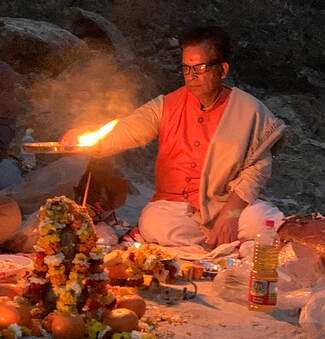
|
Blessed Murtis are designed for us to form a relationship with the Divine through form. The Divine Relationship is Eternal, Perennial, Unconditional. When you love someone, you want to know everything about that person. You begin to live to please and serve your loved one. As your spiritual practice matures and evolves, the desire for expanding into love of the Divine can blossom. You may inexplicably be drawn to a particular deity represented through a Blessed Murti. This opens the door for exploring the symbolism, meaning and significance of each aspect of the murti's design. As you dive more
|
|
Vintage Seated Medicine Buddha (available here)
|
|
Ganesha Arati Lamp (available here)
|
|
Shiva Seated in Meditation (available here)
|
